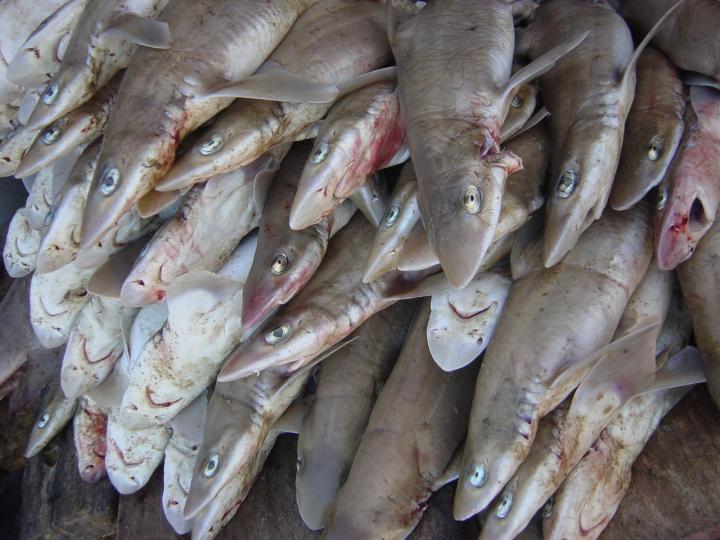
Credit: Alejandro Tagliafico
Sharks play a critical role in keeping oceans healthy, balancing the food chain and ensuring species diversity. However, the demand for shark derivatives has led to their exploitation, often without appropriate management strategies in place. In an assessment of Pacific Panama fisheries published in Aquatic Conservation: Marine and Freshwater Ecosystems, scientists from the Smithsonian Tropical
Research Institute and collaborating institutions provide a baseline to develop regulations for shark conservation.
Their field surveys, conducted over two years, revealed that artisanal and industrial fisheries of the Pacific coast of Panama regularly exploit at least 18 shark species from six families. A large number of these are caught while still immature. This is worrisome for endangered species, such as the scalloped hammerhead (Sphyrna lewini), for which immatures represented between 63 and 90 percent of the total catch. They were also among the most exploited species, alongside species from the Carcharhinid family, representing 80 percent of the catch.
“Conservation and management policies do not protect sharks as wildlife species,” said Héctor M. Guzmán, STRI researcher and principal author of the study. “For example, although the jaguar and any shark species play similar roles in ecosystem functioning, only the treasured jaguar is protected in Panama as a wildlife species, while sharks are considered an exploitable resource.”
Sharks are especially vulnerable to intensive fishing. They typically grow slowly, mature late and give birth to few offspring. So, poorly managed fisheries, such as those along Panama’s Pacific coast, put considerable pressure on their survival. Despite working with incomplete data–independent studies estimate that 75 percent of shark catches are unreported–researchers verified this concern. They found that between 2001 and 2011, shark catches dropped over 90 percent in Panama.
“If a seasonal fishing ban prohibiting the use of nets and long-lines near the coast and inside critical nursery areas for at least six months during the migration of endangered species, is implemented, it may still be possible reverse this trend,” Guzmán said.
If the current outlook prevails, recovering the populations of species that have been intensively exploited for decades will be a difficult task. Additionally, shark fisheries may start reporting economic losses and become unsustainable in the short or medium-term future.
“The study exposes the urgent need to obtain more scientific and fishery information in order to improve shark management and conservation strategies in Panama,” said Jorge Morales, STRI researcher and co-author of the study.
Based on these conclusions, the researchers propose various strategies for the protection and exploitation of sharks in Pacific Panama. This includes the development of monitoring programs for the supervision of catches, protection of critical habitats, and the establishment of fishing exclusion zones for the reproduction and early growth of sharks. In this regard, the study identifies 11 potential nursery areas of locally common and migratory sharks, which could potentially support shark conservation efforts in Panama and the region.
“This research provides a baseline towards the management of artisanal and industrial shark fisheries that have been exploited in Panama under an open access scheme that significantly undermines the sustainability of such an important fishery,” said Flor Torrijos, general administrator of the ARAP. “For the Panama Aquatic Resources Authority (ARAP), it will allow us to work on a comprehensive management plan that results in the sustainable fishing of this resource.”
###
Members of the research team are affiliated with the Smithsonian Tropical Research Institute, the MigraMar Network, the Department of Biological Sciences at California State University and the Departamento de Biología Marina y Limnología de la Universidad de Panamá-Sede Veraguas. Research was partially funded by the Smithsonian Tropical Research Institute, the Secretaría Nacional de Ciencia, Tecnología e Innovación de Panamá (SENACYT), the Sistema Nacional de Investigación and the Panalang-Union Group.
The Smithsonian Tropical Research Institute, headquartered in Panama City, Panama, is a unit of the Smithsonian Institution. The institute furthers the understanding of tropical biodiversity and its importance to human welfare, trains students to conduct research in the tropics and promotes conservation by increasing public awareness of the beauty and importance of tropical ecosystems.
Media Contact
Leila Nilipour
[email protected]
Related Journal Article
http://dx.




